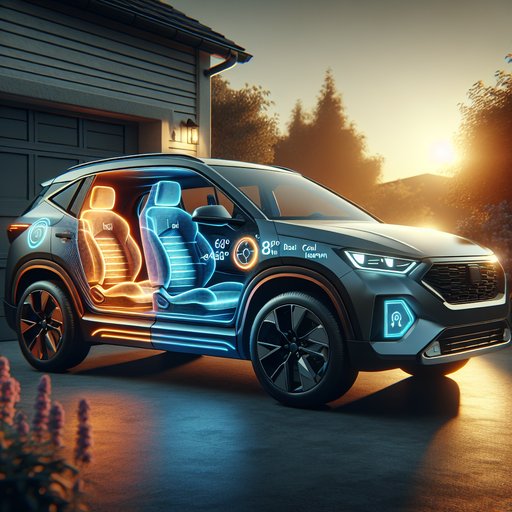
We instrumented Hyundai’s Tucson Hybrid Limited to quantify cabin warm-up and cool-down times, rear-seat airflow, and the effectiveness of its heated and ventilated seats, focusing on measurable results that matter in daily use.
Our test car is a 2024 Tucson Hybrid Limited AWD (226 hp combined from a 1.6L turbo-four and electric motor, 6‑speed automatic, estimated 37 mpg combined). The Limited adds dual‑zone auto climate control, rear console vents, heated rear outboard seats, and perforated leather with front-seat ventilation. An electric A/C compressor permits engine‑off cooling; a supplemental PTC heater assists initial warm‑up before engine coolant comes up to temp. We used a calibrated data logger (four cabin probes at head/torso for front and rear), a vent thermometer, and an anemometer at the rear console vents.
Sound levels were taken at the driver headrest. Warm-up was conducted after an overnight cold soak at 32°F ambient; cool‑down followed a one‑hour solar soak (parked, glass untinted) reaching 120°F cabin at 95°F ambient. Climate was set to Auto 72°F unless noted; seats on High for initial five minutes in hot/cold scenarios. Warm‑up: from 32°F, center‑vent outlet reached 95°F in 1:15, peaking at 122°F by 4:10 as the engine settled into a light fast‑idle.
Driver’s head‑level air hit 70°F at 6:30; rear right seat reached 70°F at 8:40. Windshield defogged uniformly by 4:30 with Auto + front defrost. Fan noise registered 58 dBA at level 4 (Auto’s peak), tapering to 52 dBA once cabin stabilized. The hybrid cycled the engine periodically after minute 7, maintaining heat without noticeable surging.
Cool‑down: from a 120°F cabin at 95°F ambient, Max A/C + recirc dropped center‑vent air to 44°F in 0:30. Driver’s head‑level air reached 75°F at 7:20; rear right seat hit 77°F at 9:00. By 15:00 the cabin stabilized at 73–75°F front/rear with Auto reducing fan from level 6 to 3. Initial fan noise measured 64 dBA at head level on Max, declining to 54 dBA by minute 10.
The electric compressor kept cooling consistent at stoplights, with no warm pulses. Rear‑seat airflow: measured at the console vents, Auto delivered 3.1–3.8 ft/s at minute 1 of cool‑down, climbing to 5.6–6.2 ft/s on Max; warm‑up readings were similar once coolant heat built. Air distribution is even across both vents, but there are no B‑pillar outlets. With two adults in back on hot days, set fan to ≥ level 4 or manually direct front center vents outward to boost second‑row flow.
Heated rear seats accelerated perceived warmth, cutting rear warm‑up by roughly a minute. Seat performance: front heated seats (High) took the cushion surface from 42°F to 92°F in 2:40, and the backrest to 90°F in 3:10; Medium held ~86–88°F without hotspots. Front ventilation dropped cushion surface temperature 8–10°F relative to adjacent leather in five minutes at 95°F ambient; backrest reduction was 5–7°F. Airflow is quiet (39–41 dBA at ear), and perforation coverage yields even cooling—most noticeable under thighs and lower back.
Overall, the Tucson Hybrid’s climate control is quick, quiet in steady state, and consistent in traffic thanks to the electric compressor and thoughtful Auto logic. For winter, remote‑start or app preconditioning for 5–8 minutes delivers a clear screen and a comfortable cabin; in summer, use Max A/C + recirc for the first five minutes and crack the rear vents fully for passengers. Families in hot climates may still want quality tint, but as tested, HVAC and seat comfort performance are among the class leaders.












